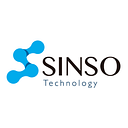I. Overview of Industrial Development & Phased Objectives
Up to now, the development of the Web3.0 ecosystem is still far from its ultimate aim to undertake all Web2.0 applications. There is no single blockchain yet that can handle the huge storage space and powerful computing power required. With decentralized storage reaching 20EB+, Filecoin has a big plan:
a. To build the world’s largest distributed storage network;
b. To introduce and protect human data;
c. To enable retrieval and computing of data so that scalable applications can be built.
From this plan, we can see Filecoin is positioned as the combination of computing network Layer0+Layer1 (though currently, most people regard IPFS as Layer0). But to be noted, valid data in the Filecoin network accounts for less than 1%. Centered on the infrastructure of Layer1, SINSO is committed to building a decentralized cache network and a data governance framework with Data DAO as the core concept. Apart from Filecoin, SINSO can also support various persistent storage projects like Crust and Arweave, while ensuring high cache efficiency and decentralized data storage. We are advancing industry development by helping more Web2.0 projects migrate to Web3.0.
Last November, SINSO launched its Testnet, which up to now has connected with 9000+ nodes and developed 50+ ecosystem partners. Last year, we received investment from Protocol Labs, and this year, we got invested from MZ Group, a well-known fund in Japan focusing on Web3 projects. In May 2022, SINSO Testnet got updated and now it is a crucial stage before SINSO Mainnet goes online.
Next, we will launch the beta test of a new mining program, as a new milestone in building SINSO into a more efficient and decentralized high-speed cache network.
II. Positioning of SINSO Mining
Essentially, mining is to build a decentralized crowdsourcing network. Yet we have seen a lot of Web3.0 applications compromise to use Amazon’s S3 storage, and also abundant centralized private IPFS nodes as a measure to solve the troublesome problem — “Efficiency.” However, this is not a good signal, for it totally goes against the concept of Web3,0. Is there a solution that balances efficiency and decentralization? SINSO’s mining network is working on it.
Adopting a crowdsourcing architecture, SINSO mining well prevents that from being controlled by centralized private nodes, thus getting Web3 developers to trust more in the project. This kind of crowdsourcing will undoubtedly bring economic benefits, and more importantly, it builds a benign economic model that allows the network to operate functionally.
The design of the new version mining program followed several important principles.
Decentralization: Distributed and decentralized. To further realize decentralized autonomy, avoid the hidden dangers of centralization; with no need to worry about human manipulation or forced shutdown, while ensuring user data security and sovereignty.
Multi-role: Allow the miner group to participate in various roles and the admission of multi-level contributors; an example is the guarantor mechanism.
Versatility: As an all-purpose caching network infrastructure, it is suitable for various cloud-network applications, such as big data, artificial intelligence, online games, etc. It is not limited to Linux systems but is also compatible with miniaturized devices and Windows operating systems.
Flexibility: The flexibility of computing node networking. When basic device conditions are met, any computing node from all over the world can join or exit the computing network without permission or affecting the overall performance.
Security: It is necessary to establish a trust mechanism and safety protection capabilities to make terminals and identities in the network credible, and to protect against massive attacks and threats.
Reliability: Multiple copies of data provide fault tolerance, and computing nodes are isomorphic and interchangeable to ensure continuous, reliable, and stable external services for 24*7 hours.
Scalability: Computing resources and computing power can be linearly expanded to form a continuously scalable cloud computing network that supports high-throughput, low-latency, and other computing-intensive applications, such as games and artificial intelligence.
Confidentiality: According to confidentiality requirements, end-to-end encryption can be implemented for user identities, data, requests, memory status, and databases, and only authorized operations will be responded to.
III. Implementation Approach
i) December 2022 — January 2023, Beta Test of the new mining program
We will start this program in parallel to let the new mining program acquire market validation and technical testing.
ii) In early February 2023, the Testnet will be switched to Mainnet.
iii) In early May 2023, the upload node efficiency will be optimized
iv) In July 2023, the incentive plan for effective data upload nodes will be launched
v) In September 2023, SINSO DAC governance architecture will be launched
Based on network infrastructure, SINSO builds an economic network, enabling different people to role-play and follow corresponding rules to carry out various economic activities. In this case, SINSO is a relatively independent and open micro-economy. In its economic model, miners and each node participant are the main body, and their role positioning, contribution, incentive or punishment, collaborative relationship and pricing mechanism in the whole system are still to be resolved. The solutions to these problems will constitute various interactive components of the economic model, including the token distribution model, the economic model of computational power, and the application model of computing resources.
The governance mechanism plays a role in decision-making, like for protocol upgrading, or adoption of community suggestions. The governance of SINSO will be carried out through SINSO DAC and adopt referendums, board meetings, etc. Furthermore, SINSO will fully implement a data-oriented DAO organization structure.
